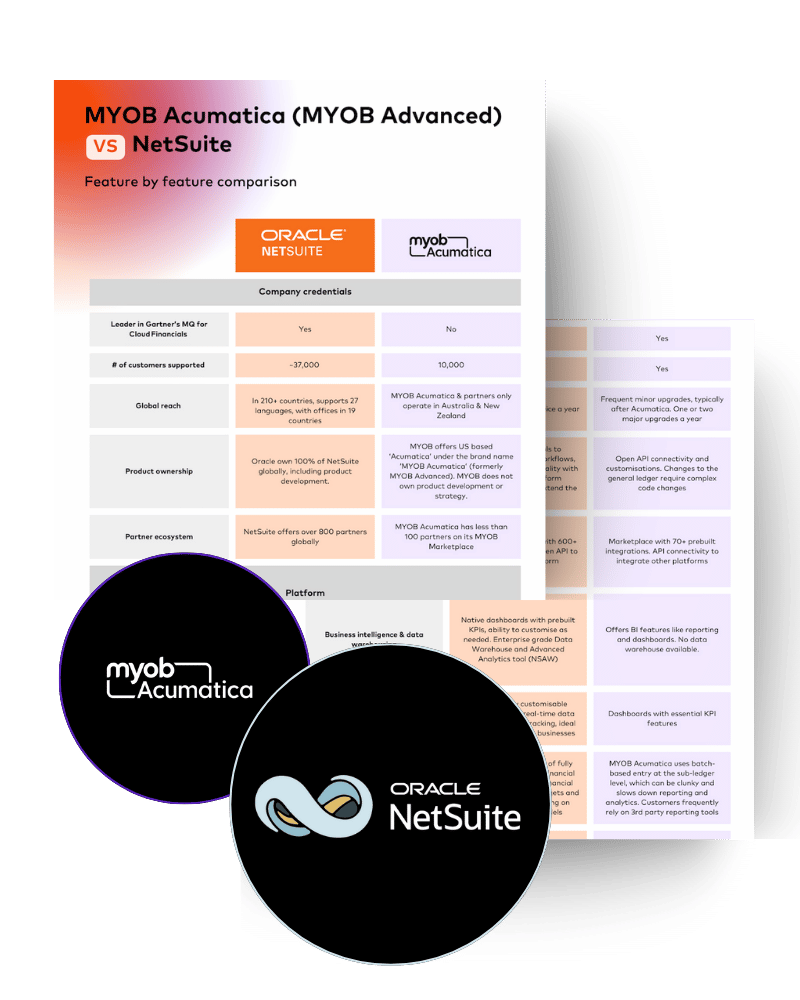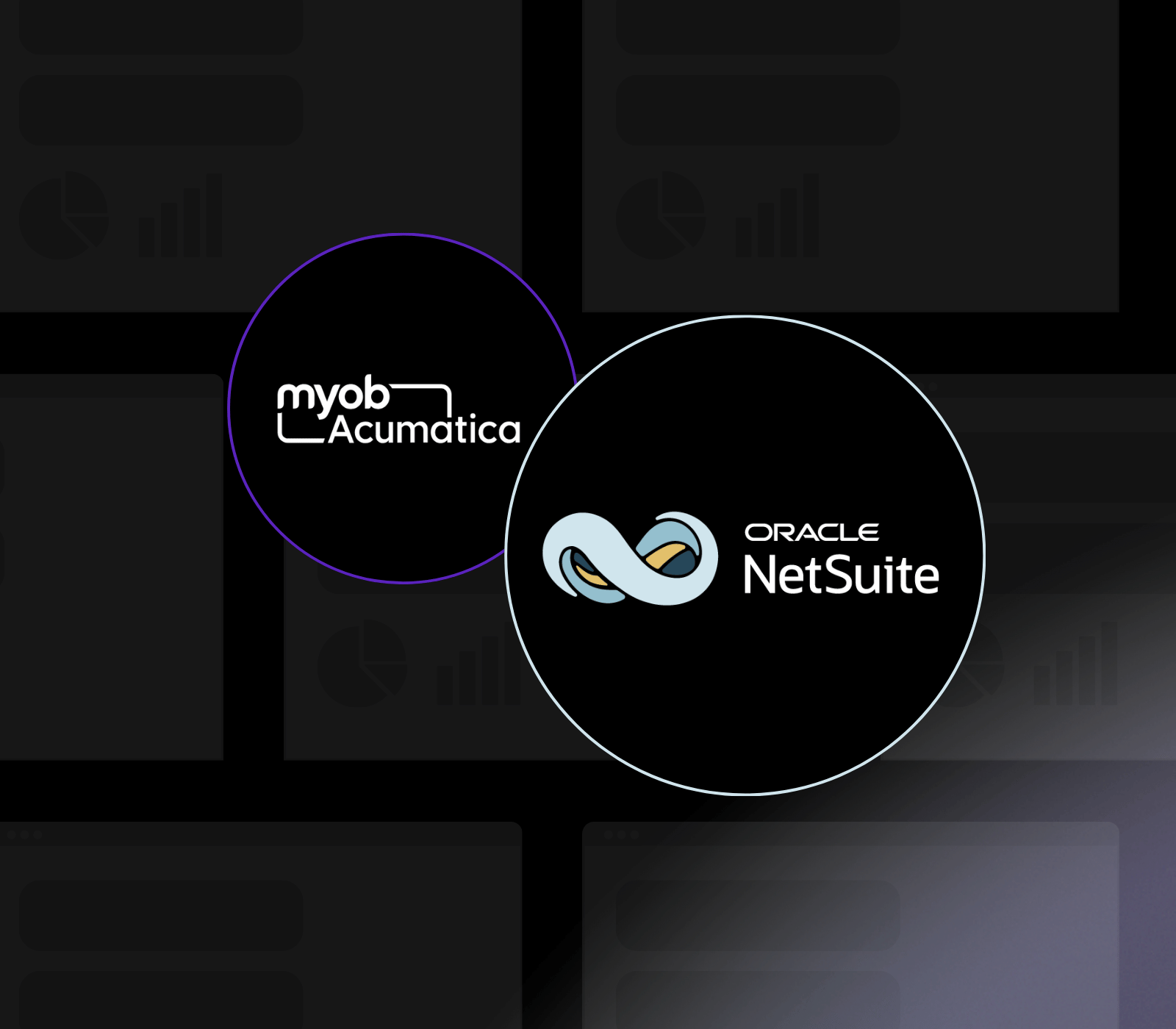Why choose NetSuite over MYOB Acumatica
-
All in one platform
NetSuite brings together financials, inventory, CRM and more in one powerful platform that far surpasses MYOB’s limited accounting scope.
-
Room to grow
While MYOB is primarily focused on ANZ markets, NetSuite offers multi-currency, language and location support, plus built-in tax and compliance to support your journey from smaller business to global enterprise.
-
Customised to fit
NetSuite’s flexibility ensures your unique business requirements are met with industry-specific editions, customisation capabilities and robust integrations options.
Understanding NetSuite vs MYOB Acumatica
-
See NetSuite ERP in action
There’s no better way to explore how NetSuite ERP can benefit your organisation than by experiencing it firsthand.Request a product tour

FREE INFOGRAPHIC
Compare MYOB Acumatica and NetSuite
Download our feature-by-feature comparison infographic to see how NetSuite outperforms MYOB Acumatica for complex business needs.
Questions to ask before you choose
NetSuite is designed to scale with complex, multi-entity and international businesses. MYOB Acumatica can handle growth to a point but often requires third-party tools and heavier customisation as complexity increases.
NetSuite offers a fully integrated finance suite with native consolidation, multi-currency and real-time reporting across subsidiaries. MYOB Acumatica delivers strong core finance tools but may require manual workarounds or third-party applications to match NetSuite’s native capabilities.
NetSuite provides automatic biannual updates with full backward compatibility. MYOB Acumatica updates are customer-initiated and may require retesting of customisations or integrations, introducing downtime and versioning risk.
NetSuite delivers role-based dashboards, real-time reporting and native analytics out of the box. MYOB Acumatica offers standard reporting tools, but deeper insights typically require third-party BI tools or added configuration.
NetSuite OneWorld is built for multi-entity consolidation, taxation and compliance across geographies. MYOB Acumatica can manage multiple entities but often lacks the automation and seamless consolidation NetSuite provides natively.
What does the move from MYOB Acumatica to NetSuite involve?
Annexa runs a structured implementation tailored to your business. This includes discovery, data migration, system design, integration planning and onboarding – ensuring your team is set up for long-term success.
Plan for growth, not just today
-
Adapt as you grow
Whether you’re expanding into new markets, launching new products or acquiring new businesses, NetSuite evolves with your structure without disruption or rebuilds.
-
Build a future-fit foundation
With connected data across finance, inventory, customers and planning, your teams can anticipate change, respond quickly and drive industry-leading growth.
Frequently asked questions about NetSuite
Yes. NetSuite OneWorld supports subsidiaries, currencies, languages and tax jurisdictions – all managed in a single environment with real-time consolidated reporting.
Yes. Unlike MYOB Acumatica, where inventory is often handled via separate modules or vendors, NetSuite includes advanced inventory, warehouse and fulfilment capabilities as native features.
NetSuite offers robust API and integration tools. Annexa frequently connects NetSuite to platforms like Shopify, Salesforce, HubSpot and industry-specific tools using native integrations or iPaaS like Celigo.
Absolutely. NetSuite is widely used by mid-sized businesses looking to scale. With industry editions, modular licensing and a flexible implementation approach, it grows with your business.
Timelines vary, but most NetSuite implementations for businesses moving off MYOB Acumatica range from 12 – 20 weeks depending on complexity and integration requirements.
let’s chat
Start your journey with Annexa
Request a one-on-one meeting with an Annexa NetSuite expert to discuss your unique challenges and opportunities.
- ✓ NetSuite ecosystem experts
- ✓ Leaders in integration
- ✓ Award-winning team
- ✓ Strategic partner network
- ✓ Innovation always





